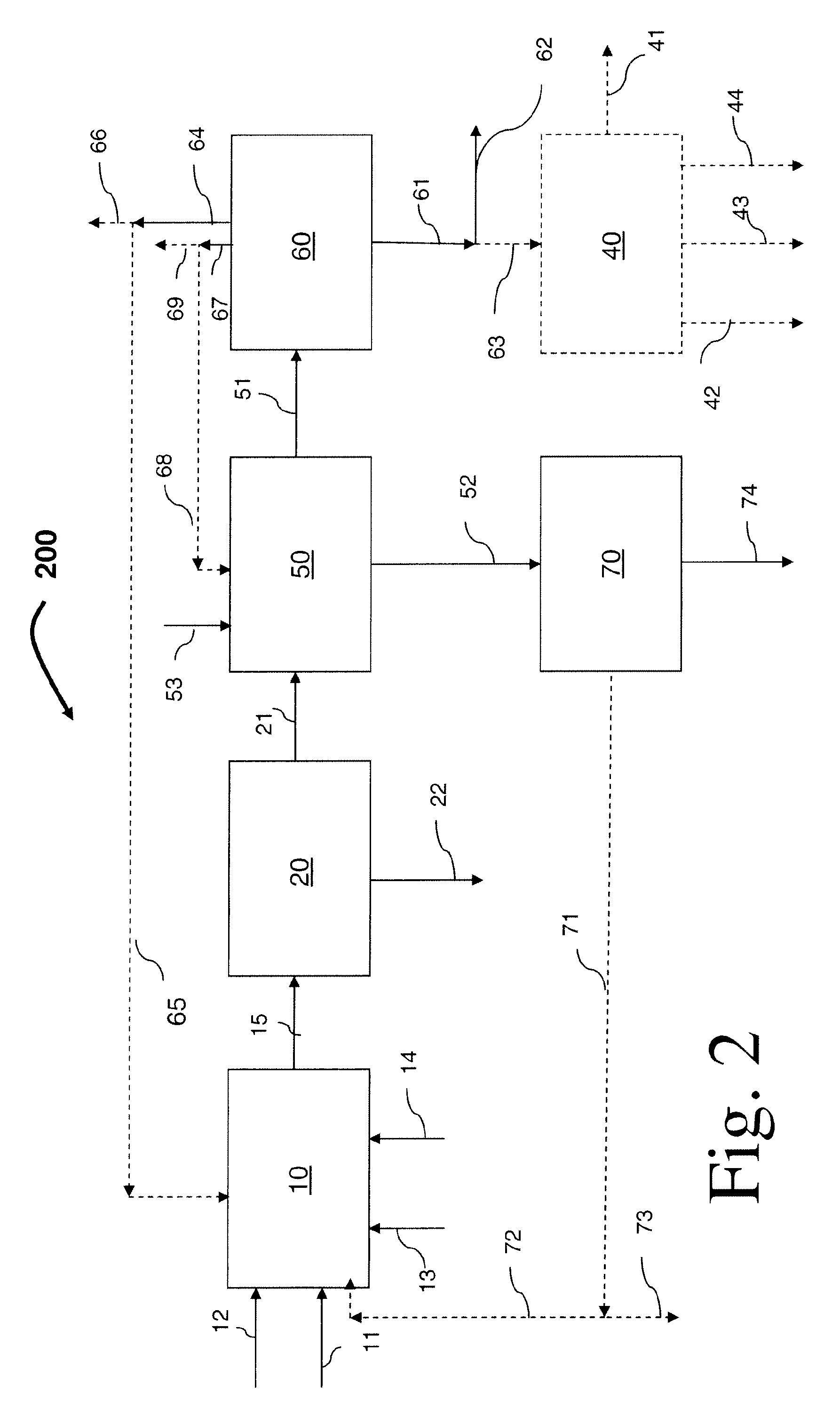Process for preparing divinylarene dioxides
- Summary
- Abstract
- Description
- Claims
- Application Information
AI Technical Summary
Benefits of technology
Problems solved by technology
Method used
Image
Examples
synthesis example 1
[0117]Caro's acid was prepared based on the procedure described in Owusu, Hydrometallurgy 1998 48 91-99. Caro's acid is partially neutralized with a potassium hydroxide as follows:
[0118]Caro's acid solution was kept in a 500 mL beaker. A 40% aqueous potassium hydroxide solution (52 g) was added to the solution over 1 hour at 0° C. The solution was stirred for an additional 1 hour with the temperature being held between 0° C. and 5° C. The solution was allowed to warm up to room temperature (about 25° C.) and stirred for an additional 1 hour. The resulting reaction mixture may be directly used in a subsequent epoxidation step. Alternatively, the solution can be transferred to a container and stored in a refrigerator until further use.
synthesis example 2
[0119]Caro's acid was prepared based on the procedure described in Owusu, Hydrometallurgy 1998 48 91-99. To the Caro's acid solution, kept in a 500 mL beaker, a sodium hydroxide solution (10 wt %, 160 g) was added over 1 hour at 0° C. The solution was allowed to warm up to room temperature (about 25° C.) and stirred for an additional 1 hour. The resulting reaction mixture may be directly used in a subsequent epoxidation step; or alternatively, the resulting solution can be transferred to a plastic container and stored in a refrigerator.
example 1
[0120]In a 250 mL 3 neck flask equipped with a mechanical stirrer, pH meter, and thermocouple, divinylbenzene (1.03 g, 7.9 mmol), acetone (82 mL), and water (42 mL) were added and stirring commenced at ambient temperature. To the flask, sodium bicarbonate (5.50 g, 63 mmol) in water (30 mL) was added followed by an additional mixing time of 10 minutes. Then partially neutralized Caro's acid (3.35 g, 20.2 mmol) from Synthesis Example 1 was added to the reaction mixture in portions over 15 minutes. The pH of the reaction mixture was maintained at between 7 and 8. After 2 hours, divinylbenzene was fully consumed. There was no DVDMO detected in the reaction mixture by gas chromatography and the reaction mixture contained 96% DVBDO, disregarding EVBO components.
PUM
| Property | Measurement | Unit |
|---|---|---|
| Temperature | aaaaa | aaaaa |
| Temperature | aaaaa | aaaaa |
| Fraction | aaaaa | aaaaa |
Abstract
Description
Claims
Application Information
 Login to View More
Login to View More - R&D
- Intellectual Property
- Life Sciences
- Materials
- Tech Scout
- Unparalleled Data Quality
- Higher Quality Content
- 60% Fewer Hallucinations
Browse by: Latest US Patents, China's latest patents, Technical Efficacy Thesaurus, Application Domain, Technology Topic, Popular Technical Reports.
© 2025 PatSnap. All rights reserved.Legal|Privacy policy|Modern Slavery Act Transparency Statement|Sitemap|About US| Contact US: help@patsnap.com



